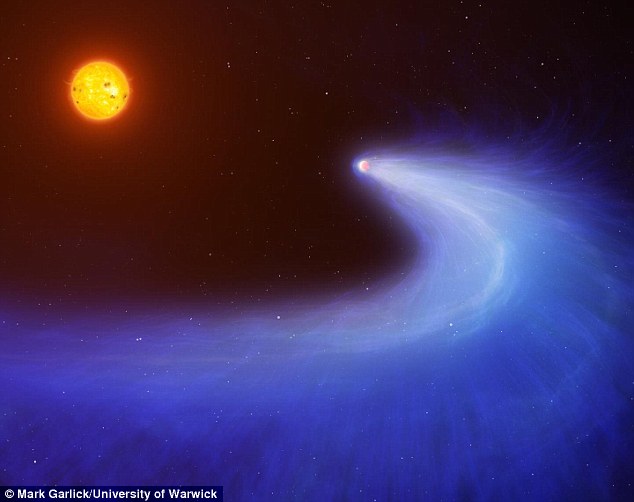-
Tips for becoming a good boxer - November 6, 2020
-
7 expert tips for making your hens night a memorable one - November 6, 2020
-
5 reasons to host your Christmas party on a cruise boat - November 6, 2020
-
What to do when you’re charged with a crime - November 6, 2020
-
Should you get one or multiple dogs? Here’s all you need to know - November 3, 2020
-
A Guide: How to Build Your Very Own Magic Mirror - February 14, 2019
-
Our Top Inspirational Baseball Stars - November 24, 2018
-
Five Tech Tools That Will Help You Turn Your Blog into a Business - November 24, 2018
-
How to Indulge on Vacation without Expanding Your Waist - November 9, 2018
-
5 Strategies for Businesses to Appeal to Today’s Increasingly Mobile-Crazed Customers - November 9, 2018
Eccentric exoplanet with comet-like tail transfixes scientists
Astronomers detected the giant gas cloud around the planet using NASA’s Hubble Space Telescope and Chandra X-ray Observatory.
Advertisement
It could help explain how rocky planets such as super-Earths that orbit very closer to their star lose their atmospheres.
David Ehrenreich, an astronomer at the observatory of the University of Geneva in Switzerland and lead author of the research, commented that he was astonished to see the giant clouds escaping from the planet.
Gliese 436b has an atmosphere leaves behind a very big trail of hydrogen, which is about 50 times the size of the parent star, Gliese 436.
The researchers believe the gaseous cloud, or tail, trailing the exoplanet is able to remain largely intact because the planet’s red dwarf star is relatively cool, not emitting enough radiation to sweep the gas away. The planet orbits just 2 million miles from its host star.
Although the evaporation rate doesn’t threaten the planet right now, we know that the star, a faint red dwarf, was more active in the past. In the past, however, the rate was probably faster, and so the planet may have lost up to 10% of its atmosphere over its lifetime, the scientist added.
The findings appear in the journal Nature.
Around 1,000 metric tons of hydrogen is being burst off from the planet’s atmosphere every second, according to Dr. Peter Wheatley of University of Warwick.
Dubbed GJ 436b, an exoplanet about the size of Neptune was observed orbiting a red dwarf star with a massive gas trail.
GJ 436b is a planet but doesn’t look like one.
The scientists now plan to investigate less massive planets, such as “super-Earths” and “mini-Neptunes” to see if they might also have puffy atmospheres and comet-like tails. It’s as if, after carrying the planet’s atmosphere at a high temperature, causing the hydrogen to evaporate, the radiation of the star was too weak to blow away the cloud that accumulated around the planet. Gliese 436b is sloughing its hydrogen atmosphere out into space as it closely orbits its dim star, giving the world a tail that makes it resemble a comet. This exoplanet is at least 6 billion years old, and may even be twice that age.
[3] The ultraviolet technique may also spot the signatures of oceans evaporating on smaller, more Earth-like planets.
The video shows the result of a computer simulation performed to explain the observations made with the Hubble Space Telescope.
Earlier studies of Gliese 436b have suggested it has a small rocky core, a mostly water ice mantle, and a thin outer envelope of hydrogen and helium gas.
Astronomers looking through the Hubble Space Telescope’s ultraviolet spectrograph recently spotted Gliese 436b, a planet the size of Neptune that is about 30 light years from Earth.
Advertisement




























